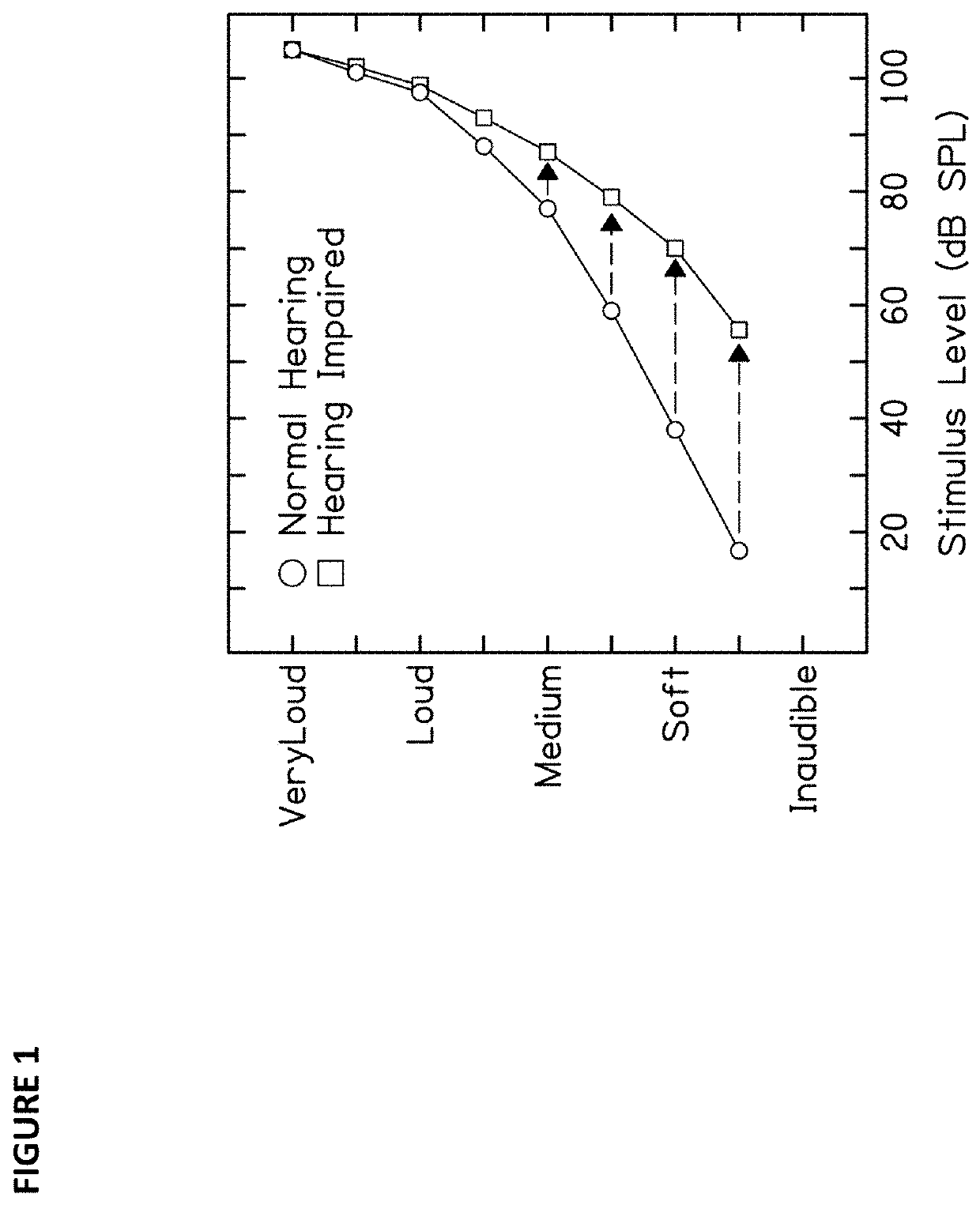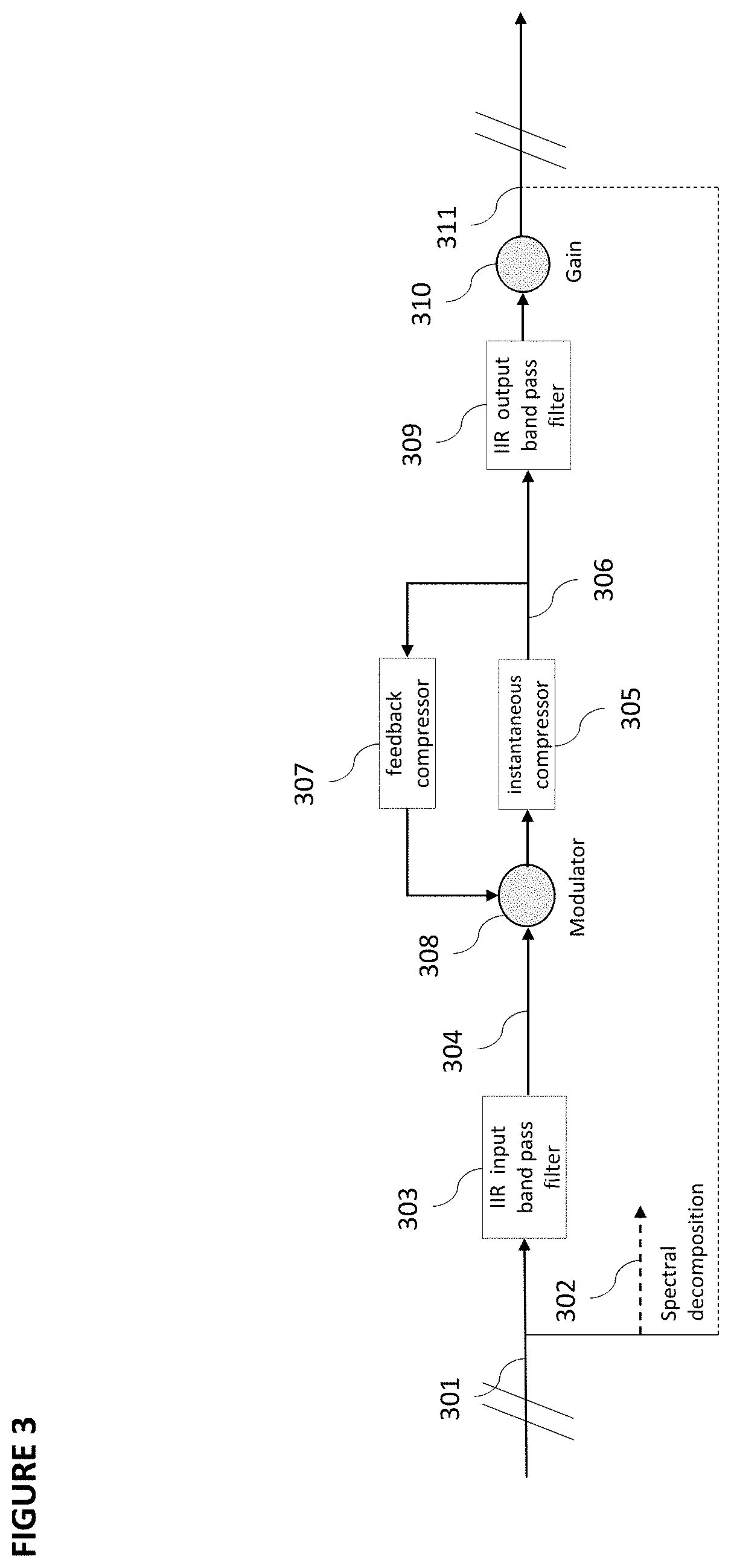Systems and methods for processing an audio signal for replay on an audio device
a technology of audio signal and audio device, applied in signal processing, digital/coded signal combination control, instruments, etc., can solve the problems of difficulty in listening in a noisy environment and hearing, subsequently experiencing loudness discomfort, and adding eq gain would be detrimental to hearing health, so as to achieve clearer and more natural sound
- Summary
- Abstract
- Description
- Claims
- Application Information
AI Technical Summary
Benefits of technology
Problems solved by technology
Method used
Image
Examples
Embodiment Construction
[0059]Various example embodiments of the disclosure are discussed in detail below. While specific implementations are discussed, these implementations are for illustration purposes only. One of ordinary skill in the art will recognize that other components and configurations may be used without parting from the spirit and scope of the disclosure.
[0060]In order to create audio processing algorithms that mimic the functional processing of the human ear, a framework for healthy hearing must first be developed. Generally, the model of normal hearing consists of cascading stages, simulating the physiological parts of the signal processing pathway in the auditory system. The model developed by Meddis, R. (see Meddis, R., N. R. Clark, W. Lecluyse, and T. Jürgens, “BioAid—A Biologically Inspired Hearing Aid”. Audiological Acoustics 52: 2013, 148-152, 2013) aimed to provide a faithful representation of auditory nerve firing patterns, as seen in the model of the auditory periphery in FIG. 2. ...
PUM
 Login to View More
Login to View More Abstract
Description
Claims
Application Information
 Login to View More
Login to View More - R&D
- Intellectual Property
- Life Sciences
- Materials
- Tech Scout
- Unparalleled Data Quality
- Higher Quality Content
- 60% Fewer Hallucinations
Browse by: Latest US Patents, China's latest patents, Technical Efficacy Thesaurus, Application Domain, Technology Topic, Popular Technical Reports.
© 2025 PatSnap. All rights reserved.Legal|Privacy policy|Modern Slavery Act Transparency Statement|Sitemap|About US| Contact US: help@patsnap.com



